 Semana Santa - Easter in Ronda
Semana Santa - Easter in Ronda
Guide to Semana Santa in Ronda - Easter Holy Week
Semana Santa (or Holy Week) is almost upon us again. It is an event of great significance in Ronda, as in most Andalucian towns and villages - even more important than Christmas – and the holy week processions are the result of intense preparation and devotion from the local population over the previous twelve months. It is a time for individuals and the hermandades “brotherhoods” to which they belong to demonstrate their religious fervour and to present the impressive results of many hours of work on the floats and images of Christ and the Virgin Mary which are carried through the streets. In addition, there is much skill and coordination to be admired as up to 50 bearers hoist the heavy wooden floats (they can weigh 5 tons!) up onto their shoulders or necks for up to 6 hours of carrying them rythmically through the town, often managing a quick-step or two along the way to punctuate the music played by the accompanying bands.
In Ronda, processions and special church services take place throughout the full Semana Santa week (starting on Palm Sunday and ending on Easter Sunday) but as a visitor to the town, it can often be difficult to work out what is going on and where you should go to see the most interesting or most impressive events. The official Semana Santa programme is never available well in advance and even when you do get one, it is quite confusing in its detail. Each Hermandad has its official long title and also a shorter, more colloquial title. Both names are used in different sections of the published timetable of processions and it assumes quite a lot of knowledge of what happens and the “speciality” of each hermandad, so it doesn’t give many clues about which ones you should choose to watch. I certainly wouldn’t suggest trying to see everything – you will be exhausted!
So here is a brief overview of the key things to look out for and lower down is a table which lists all the processions through the week and tries to explain (where I can find it out!) what is special about each. Be prepared for late nights, lots of waiting around (as the processions move slowly) and also some truly amazing sights and sounds.
Also, take a look at this great short videoo which gives a taster of Semana Santa in Ronda.
Hermandades (brotherhoods) or Cofradias – the associations which care for the religious images of Christ and the Virgin Mary throughout the year and provide the bearers and accompanying walkers for the processions. Most were formed back in the 16th Century, when their role was to bring the Catholic message out of the churches into the streets and they are still involved with religious training, worship and charity work. They are highly organised bodies and it is a great honour within them to be selected to carry one of the floats. Note: the procession in these photos is the Hermandad de Los Gitanos on Palm Sunday.
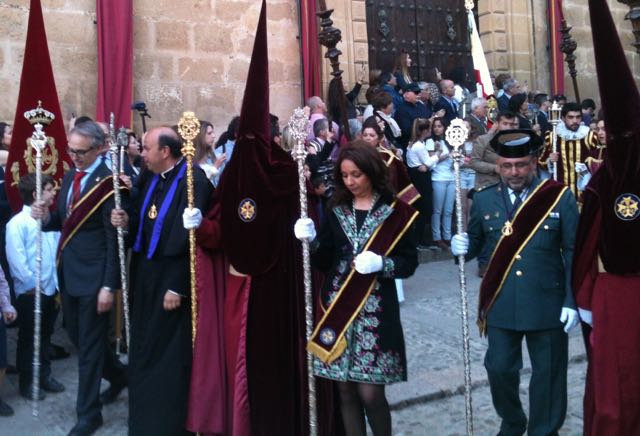
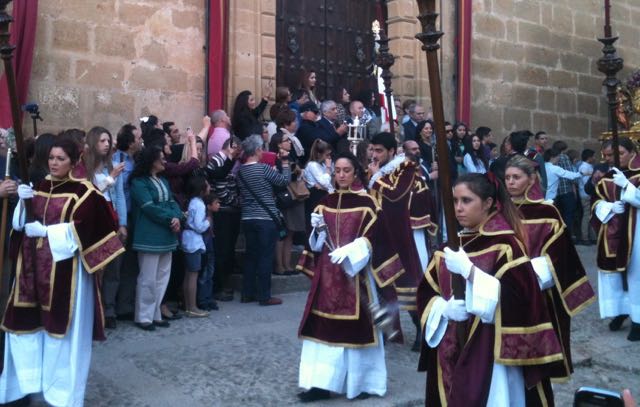
Processions – Ronda has 14 different processions through the week, most in the late evening/night, lasting anything between 3 ½ and 6 ½ hours. They exit their home church, the “Salida”, then take a winding route through the town to eventually arrive at the main Plaza del Socorro. Here you will see red carpets and official seating where the mayor or other local dignitaries wait to acknowledge each procession, and then they return to their starting point. The processions are made up of the main floats, penitents, bands/musicians, groups of glamourous women in black lace outfits, lantern bearers, cross-bearers, people swinging incense burners and a selection of senior, highly decorated members of the Hermandad.

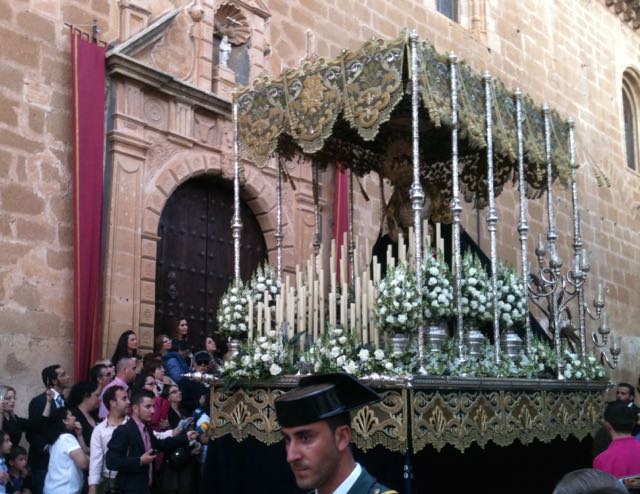
Sometimes children also participate, handing out small cards with photos of Christ or little bouquets of rosemary. Crowds gather in large numbers at the churches for Salida and the really devoted are still there when the procession returns, many hours later, the “Entrada” or “Recogida”. Often there are large metal containers filled with burning rosemary outside the church for Salida, filling the air with fragrant, but choking, eye-watering smoke.

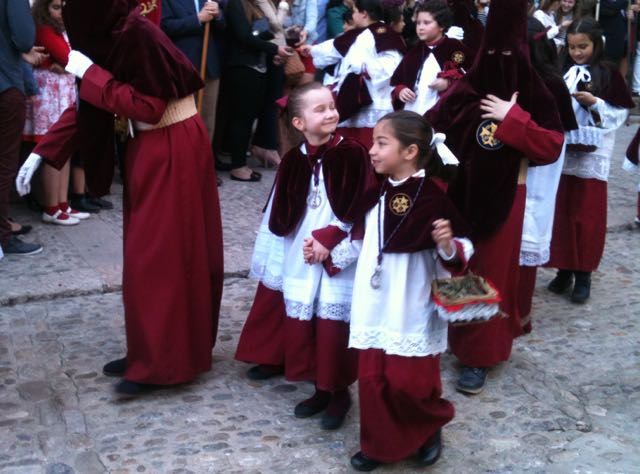
Floats: Images of Jesus Christ and the Virgin Mary – highly decorated and elaborate statues and platforms which reflect different parts of the Easter story and the final weeks of Jesus’ life - his triumphal entry into Jerusalem, the Last Supper, Agony in the Garden, his arrest and trial. Each brotherhood has a long devotional title which largely expresses the particular part of the story which they are telling. The floats are carried either on the shoulders, “Horquilleros”, where the bearers are visible, or on theback of the neck, “Costaleros”, where the bearers are hidden beneath the float, surrounded by drapes. Guides all around the float direct the bearers who cannot really see where they are going with shouts, microphones and sometimes phones to help them negotiate the tricky routes, up and down kerbs, over cobblestones and round twisting, narrow streets. You may spot practice sessions for float-carrying all around Ronda in the weeks leading up to Semana Santa.
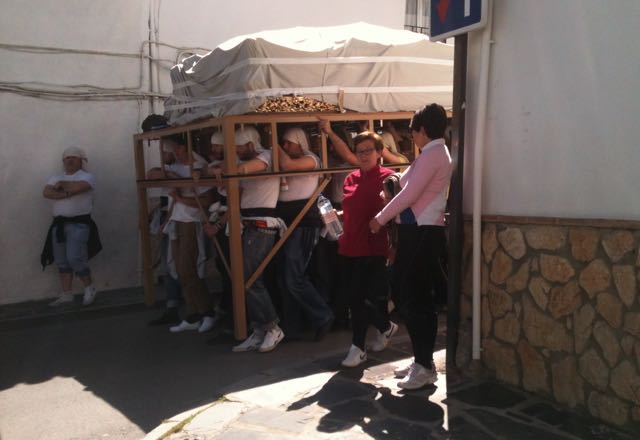
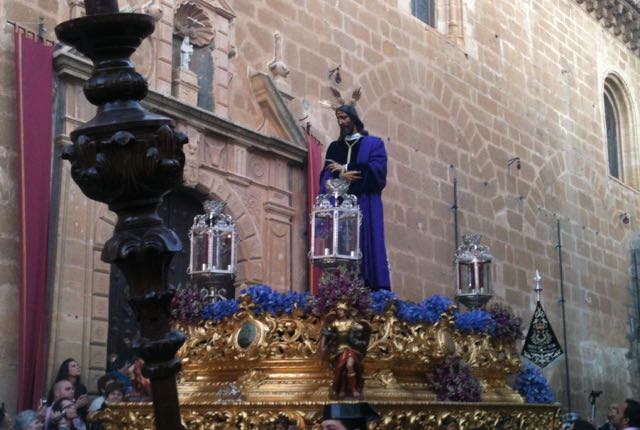
Bands and music – normally two within every procession, one for the section with the Christ image and one for the Virgin Mary. Most of the music is fairly sombre but some can be a little more rythmic and turneful and the float-bearers tend to move in time with the music, meaning that the floats often sway rather precariously, with canopies, statues, candles and urns looking like they could come crashing down at any minute. An occasional procession proceeds without music – the most famous in Ronda is on the Wenesday night, when the members of the Hermandad del Silencio process with chains around their ankles. As they walk from the old town over Ronda’s Puente Nuevo, the chains drag across the cobble-stones giving an extremely eerie and sombre tone to the whole event. Some processions are also accompanied by people singing saetas, impassioned songs sung without accompaniment. Traditionally they would stand on balconies overlooking the procession but sometimes they walk with the main procession.
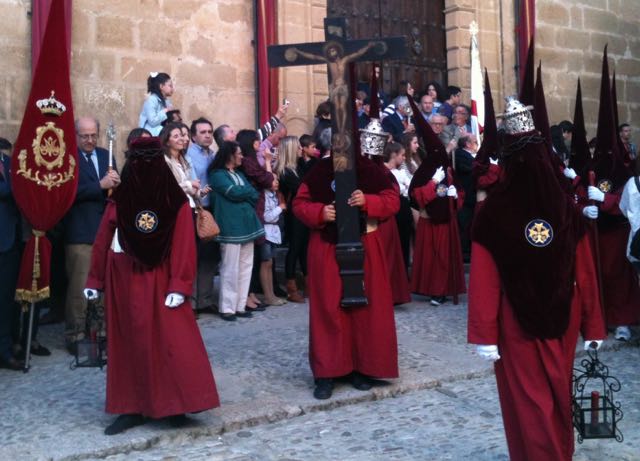
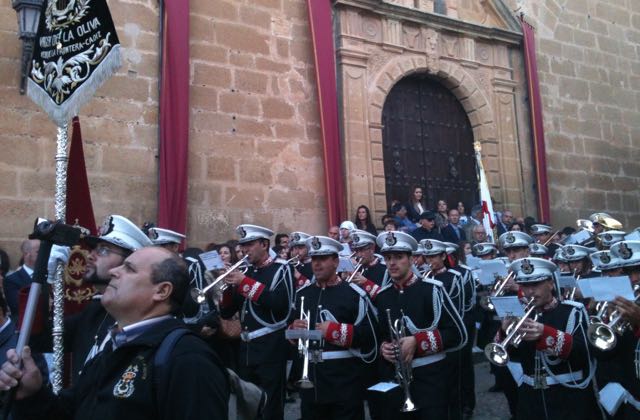
Nazarenos (penitents) - one of the most notable (and for non-Spaniards, most surprising) parts of any procession. These are groups of people from the hermandad who accompany the floats as they process through the town, dressed from head to toe in long robes, with tall pointy hoods, showing nothing but their eyes. Their feet are often bare as a sign of penitence. Each brotherhood has a different colour for their robes, with a different insignia. For most of us, they look like something from the Ku Klux Klan but nothing could be further from the truth. There are many interpretations of why they wear the robes but I tend to buy the one about them wearing the hoods to retain their anonimity as they confess their sins.
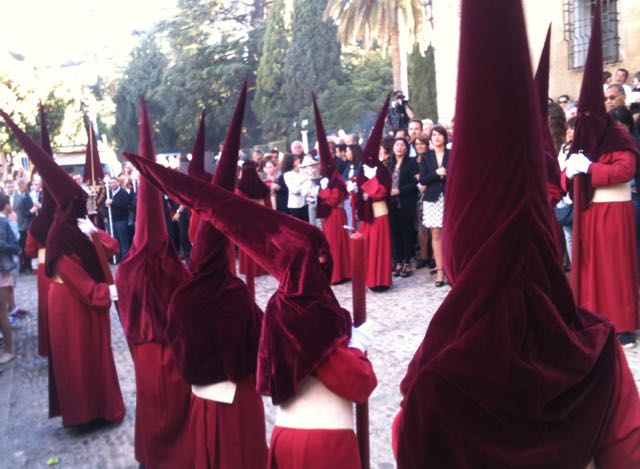
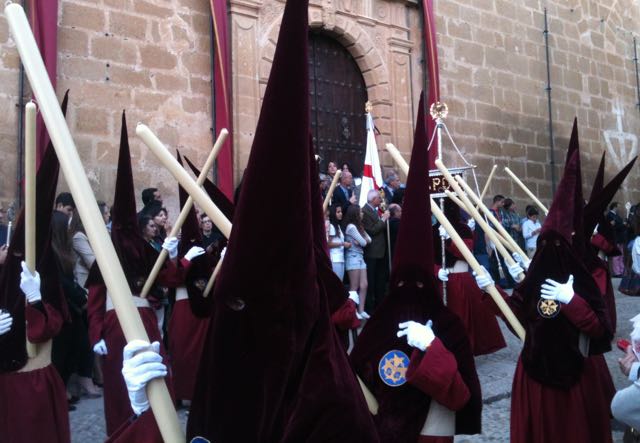
Timetable of Processions
Each of the hermandads has a designated day and time for their Salida and Entrada which remains the same each year, so whilst the official timetable is never available long before Easter week starts, just look at last year’s and it will be fine for this year too.
Note: Here I have used the short name as it matches what is on the map of Salidas below.
Note: All Easter celebrations in Spain finish on Easter Sunday. There is no holiday or any significance here on what many people know as Easter Monday, the day after Easter Sunday.
| Hermandad de: | Notable Points | Day | Salida Church | Salida Time | Entrada Time |
| ....la Pollinica | Lively procession celebrating Jesus’ entrance to Jerusalem on a donkey. Features a donkey and many children waving palm leaves and olive branches. | Palm Sunday | Iglesia de San Antonio de Padua | 11.00 | 15.30 |
| ...del Prendimiento | Palm Sunday | Iglesia de San Cristóbal | 17.00 | 23.30 | |
| ...de los Gitanos | ...the gypsies. Christ statue is of him being arrested | Palm Sunday | Colegiata Santa Maria La Mayor | 19.00 | 00.30 |
| ...del Huerto | Christ statue is him praying at the orchard, watched by an angel. The scene is also acted out on the plaza outside the church before the salida. The two floats are huge, requiring 147 bearers to carry them. | Monday | Iglesia de Santa Cecilia | 20.00 | 01.00 |
| Via Crucis | Christ carrying the cross to his crucification. A very serious, intense procession. | Tuesday | Iglesia de Padre Jesus | 22.00 | 23.30 |
| ...de la Columna | Image is Jesus tied up and beaten at a pillar, watched over by a Roman soldier. | Wednesday | Iglesia de San Cristóbal | 20.15 | 00.00 |
| ...del Silencio | Known as “Christ’s blood”, statue is Jesus on the cross. Procession without music, the chains around the penitents’ ankles dragging on the cobbles are the only sound. Very atmospheric. | Wednesday | Colegiata Santa Maria La Mayor | 23.00 | 03.00 |
| ...de la Vera + Cruz | Special black robes with long tail | Maundy Thursday | Colegiata Santa Maria La Mayor | 20.15 | 23.30 |
| ...del Ecce-Homo | Saeta singing is key to this procession. Unusual in having two statues of Christ, as well as the Virgin; the first, Christ condemned to Death, is carried by soldiers of the Spanish Legion. | Maundy Thursday | Santuario Maria Auxiliadora | 19.15 | 01.15 |
| ...de Padre Jesus | Image is of Christ carrrying the cross. Because of the position of the church, low down in the oldest part of town, from viewing points above, where you can’t see the bearers, it is supposed to look like someone really carrying a cross up the street. | Maundy Thursday | Iglesia de Padre Jesus | 23.00 | 03.45 |
| ...de las Angustias | Both floats feature Christ and the Virgin together, focussing on the anguish and suffering of the mother, first whilst he is on the cross and second, having been taken down, in her arms. | Good Friday | Iglesia de Santa Cecilia | 12.00 | 15.30 |
| ...del Santo Entierro | One of the oldest hermandads of Ronda – dates back to 1574 or even earlier. Procession depicts the Funeral of Christ, with his body in a glass coffin. Sombre, quiet band, almost silent except for the sound of funeral bells. | Good Friday | Casa Hermandad Santo Entierro (Barrio San Francisco) | 19.00 | 00.30 |
| ...de la Soledad | Silent apart from a single drum. Firework display at the church at Entrada. | Good Friday | Iglesia de la Merced | 20.45 | 00.30 |
| ..del Resucitado | A joyful procession, celebrating the Resurrection of Christ. Virgin is carried solely by women. | Easter Sunday | Iglesia del Espiritu Santu | 10.30 | 15.30 |
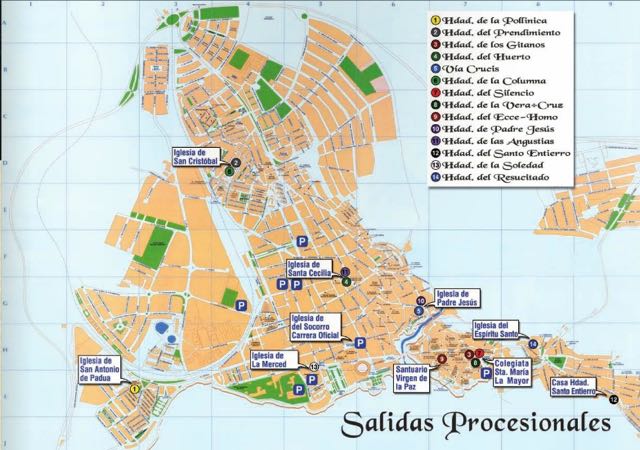

Heather Cooper, Hike + Bike the Sierras 20/03/2015 (updated 22/3/2019)

